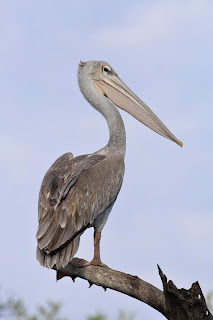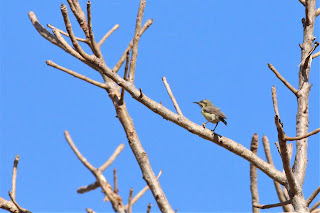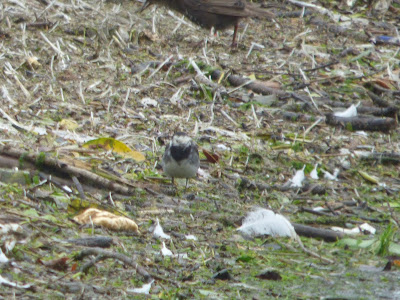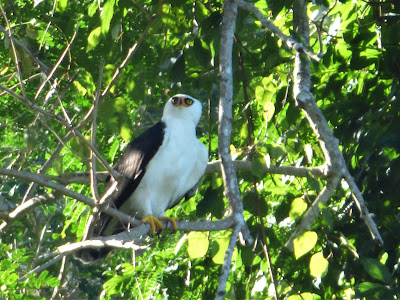Birding Adventures around the World
Blogs of some of my birding adventures in the UK Saudi Arabia and some other spots around the world.
Tuesday, 26 December 2023
Gambia 2019
Wednesday, 26 July 2023
Broad Meadow Estuary
Tuesday, 13 June 2023
Bird recordings
Since being floored by Covid my old way of birding has had to change. I can't walk anything like the distances I could. So one area I have begun to explore is the world of audio recording. I started with a small digital Dictaphone which worked great but there was no way to transfer it to a computer for playback or analysis
I heard about a great tool, the AudioMoth, from an ornithologist friend, which although a little hard to get hold of is relatively cheap and can be configured to record over days or even weeks and having eventually gotten my hands on one worked really well.
I have been using this for almost a year now and am delighted with the results. I mostly set it up in my garden at home but also of late have been setting it up in the Cemetery Woods at Colne in Lancashire (SD 89770 439895)* and also at Greenfield Nature Reserve at the opposite end of the town from my place (SD 87225 39618). Early efforts were a bit frustrating as getting into wildlife audio recording you soon come to realize how much ambient noise there is about that our wonderful brain filters out for us. However, the AudioMoth's configuration tools are designed to help reduce this.My first outing at Greenfield NR was was at the start of April and we had a total of 28 species including Wren, Chiffchaff, Great Tit, Robin, Bullfinch, Goldfinch, Blackbird, Carrion Crow, Dunnock, Oystercatcher, Jackdaw, Blue Tit, Chaffinch, Goldcrest, Grey Wagtail, Song Thrush, Mallard, Coal Tit, Wood Pigeon, Long Tailed Tit, Blackcap, Jackdaw,, Canada Goose, Greater Spotted Woodpecker, Magpie, Willow Warbler, Song Thrush and possibly Mistle Thrush.
I have been gradually learning bird calls and songs but also make use of a wonderful tool from Cornell University, the Merlin Application which can be downloaded to your smartphone. I have noticed that some calls, like the Ring Necked Pheasant and members of the Pigeon and Dove family cause occasional issues for Merlin, these are almost entirely in the lower frequencies.
Once the recordings are made I use yet another valuable tool to help identify the birds and that is Audacity which allows you to download the WAV files and analyze them via the sonogram, I have taken a screen shot of one of the files I loaded in the back garden recently;
This was recorded at .4:26 in the morning in Mid May and has Wren, Ring Necked Pheasant, Curlew and Blackbird in this minute long image. No I was not up that time but the beauty of AudioMoth is you don't need to be. An obvious thing to say here is if the bird remains silent like many overflying and female ones do you don't know they are there but in combination with visual records this can show a lot more of what is around you, especially when the trees are leafed up and birds can hide easily.
On another front this could be a great way for the visually impaired to become involved in our great past time.
I now have two AudioMoths and am gradually getting the time to get out and place them in more interesting places. The latest piece of kit to arrive (sorry I'm a real sucker for a gadget) is a HydroMoth, which is the underwater version of the AudioMoth, but can be used out of water too. Can't wait to get a chance to try this out.
 |
| Parabolic Microphone |
* for those not familiar with the location coding, this is the one used by the UK Ordinance Survey Maps to identify the location.
© Bernard Bracken 13/6/23
Saturday, 15 February 2020
Adventures in Mexico
On most days you could see Brown Pelican standing by the waterside or flying low over the tops of the waves. Very graceful for such a large bird.
These guys get everywhere lol. Nice to see large numbers of House Sparrow all around the area too.
Grey Breasted Martin congregated in large groups on the roof of the building opposite us and were a delight to watch in the morning as the heat began to rise, darting about the sky chasing insects.
A Great Kiskadee just perched on a fence waiting to be photographed on one of our beachside walks.
Golden Cheeked Woodpecker
This shot did not come out as planned but along the beach here are numerous turtle nest sites protected from being trodden on by these fences. To the north of the Puerto Vallarta bay there is a locally run charity which collects the eggs and raises the young. During the season they encourage visitors to come and help with the release of the young. By preventing the seabirds getting to the young they think the life expectancy goes up dramatically.
Beautiful Blue Grey Gnatcatcher
Colima Pigmy Owl getting camera shy. I had a fantastic shot of this guy looking straight at me but in the second it took to press the shutter he was dive bomber by some other birds and took off. Oh well I have the memory of it :)
Turkey Vultures were fairly common across the area as were Black Vultures, although the latter were always too high for me to get photos of.
The Great White Egret winters in this area, magnificent birds easily reach 3ft or more tall.
Black Bellied Whistling Duck were spotted in large numbers on a small inland lake we visited during our tour.
I think this is a Neotropic Cormorant as it has relatively little yellow on its face, happy to hear from anyone who can confirm or correct.
In the little lake we visited there were about 5 or 6 American Coot in among the Ducks, Cormorants and Egrets.
Some Cattle Egret, Black Bellied Whistling Duck a Neotropical Cormorant and a couple of Whimbrel hiding.
Grey Tailed Grackle
Some more Black Bellied Whistling Duck
This was the closest to a breach I managed to capture, this guy only came up a few feet then rolled over and crashed back in.
Magnificent Frigate Birds were everywhere soaring waiting for a meal. This is a female with the white breast the male has a red throat but in flight mostly looks all black.
Another tail, the local experts have a database of all of the fin patterns and can identify most of the whales in the bay. When whaling was allowed the stock was almost totally eradicated and all of the current whales in the bay are young that were not taken during the dark days when their parents were caught. We had the pleasure of witnessing a mother and calf in a different area of the bay. Apparently there had been a couple of Killer Whales in the bay in the weeks before we arrived looking for calves.
Pretty sure this is a Heermann's Gull with a Tern behind, did not get a good look at the Tern so that's as far as I can go with that id.
Not a great photo of a nice Rufous Backed Robin.
A very elegant Masked Tityra, beautiful bird but not that easy to get close to.
A couple of Stripe Headed Sparrows. These were quite common outside of the villages and towns where their House Sparrow cousins reigned supreme.
Not sure about this, may be an escape but looking into it.
San Blas Jay is a fairly noisy occupant of the woods.
A Crested Guan, this is quite a large bird just a little smaller than a Turkey, impressive flyers considering their size. We also saw a pair of West Mexican Chachlaca at the Botanical Gardens but I did not get a good photo of them.
Masked Tityra
Cinnamon Hummingbird was bloody difficult to photograph, they are constantly on the move and most of the shots you get are just a blur. We also saw a Plain Capped Starthroath but go no chance to photograph it.
An Ivory Billed Woodcreeper. This was the only useful shot I got of this guy as he scurried along that branch, mostly upside down.
A hanging nest designed apparently to prevent Racoons getting at the young.
The highlight of the day, especially for Michael our guide, this is a Black and White Hawk Eagle, they are very rare in the area and as far as is known this is only the second sighting of this in the Puerto Vallarta area. They are a bit more common on Mexico's east coast.
Citreoline Trogon has a gorgeous yellow breast but was not in the mood to show it today!
Orange Fronted Parakeet was happily munching on foliage in the trees around our site. Lovely bird to watch.
not sure about this yet!
A parrot from another land. Increasingly these days you find pet birds in the wild who have escaped from captivity, this Australian Parrot is one such example. Not local but escaped and liked what he found. By the way here were a pair of these in the area so I guess next time I go there may be many more!
Yellow Winged Cacique were seen in flocks landing on bushes and feeders to take their meals. Quite a noisy bird but lovely to watch.
Golden Cheeked Woodpecker.
Military Macaw were once pretty common around the area but thanks to people stealing eggs and removal of habitat their numbers have crashed. We saw two flying over at considerable height but this guy is a rescue which is being tended to at the Botanical Gardens. It is hoped it will pair in the future with a wild bird.
Blue Bunting, lovely bird but crap photo, had problems getting a good photo as there were so many people in the way!!
The very handsome Streak Backed Oriole are fairly common in the hills, surprisingly difficult to see well though.
A very beautiful Golden Cheeked Woodpecker was working hard to knock holes in the trees of the Botanical Gardens.
This I believe is a young Black Iguana which was spotted in bushes in the Botanical Gardens, Mexico has a good number of reptiles these being fairly safe to be around, unlike the crocodiles which were spotted in the town marina, proper big jobs too, 10 to 12 ft long!! They are apparently non aggressive but it does not do to upset them as they have been known to forget that fact!!
Had a wonderful day's birding with ECO Tours and will definitely do it again if I get the chance.
© Bernard Bracken 2020




























































































